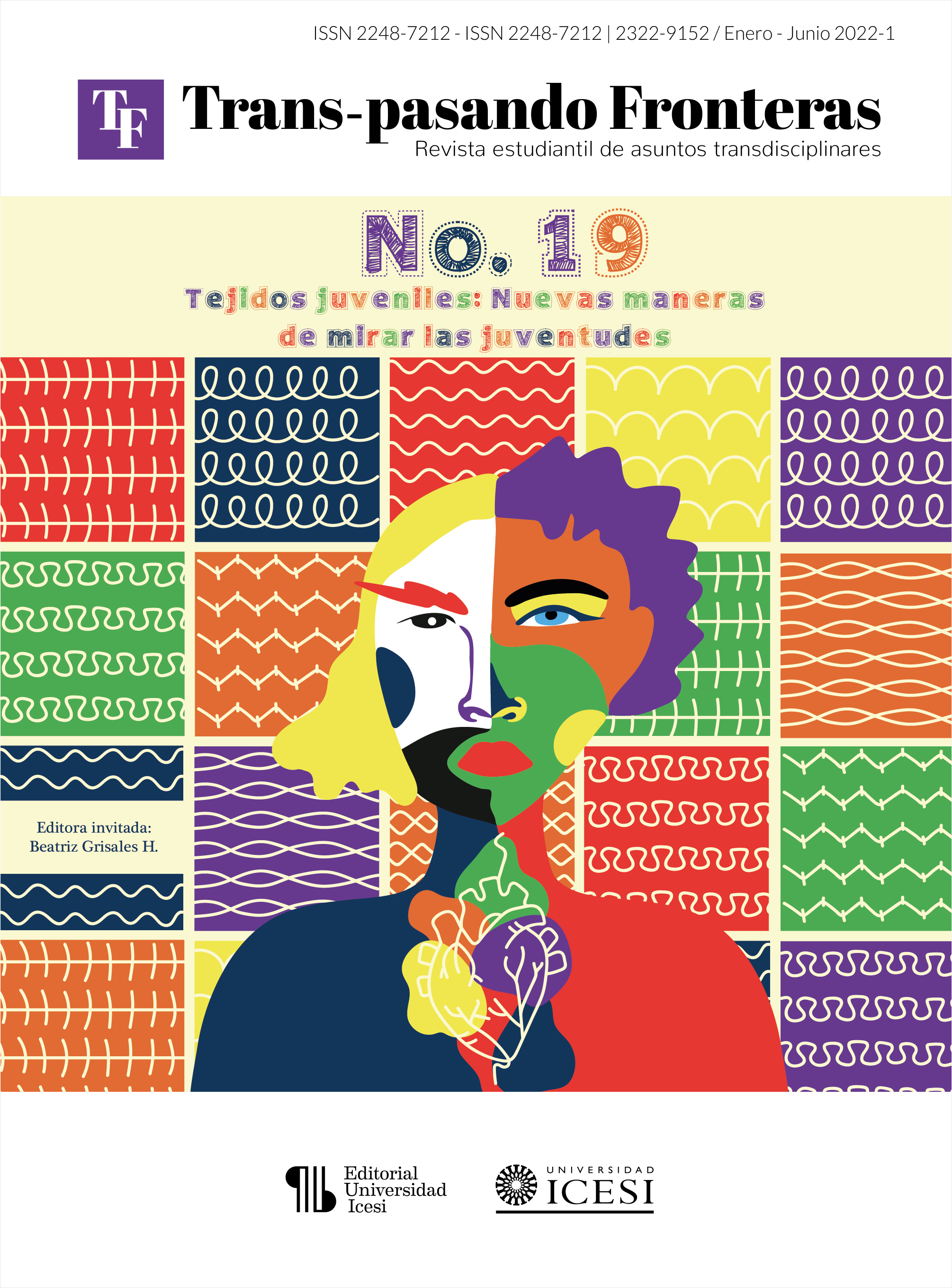Generation of Reflective Spaces with Young People in the Community of Santa Elena, El Cerrito
DOI:
https://doi.org/10.18046/retf.i19.5566Keywords:
cinema Forum, youths, social fabric, network actor theoryAbstract
This article is part of the realization of a community social psychology project that linked a group of young people from the village of Santa Elena, municipality of El Cerrito, in spaces for youth participation and organization around social and territorial reflection with a focus that involved research - action; the project was guided by the theory of the Actor Network (TAR) as a way of analyzing the phenomenon and a roadmap to propose activities that would allow mobilizing the action of young people in spaces that make up networks of social fabric in the community, the corregimiento has become characterized by a lack of spaces and cultural activities that promote the good use of free time, as well as youth encounters and dialogue; Therefore, through film forums, the aim was to generate spaces that would promote dialogue and collective reflection on the territory and the femémonos of youth. As a conclusion, it is obtained that from the cinema forum a non-human actor was formed, on which the intentions of the human actors were mobilized to reflect on their own reality, likewise, it is found that the formation of the social fabric is a complex process in which the actors present in the territory converge.
Downloads
References
Carrera, J. (2015). Miedo social, intervención comunitaria y promoción cultural en Chihuahua. Reflexiones sobre un estudio de caso. Cuicuilco vol.21 no.60 México. Disponible en: http://www.scielo.org.mx/scielo.php?script=sci_arttext&pid=S0185-16592014000200012
Cittadini, Roberto, Javier, Vitali, Aranguren, Cecilia, Ledesma, Sandra y Prividera, Guido (2015). La teoría del “Actor Red” y la implementación de Observatorios de Prácticas Territoriales. I Congreso Latinoamericano de Teoría Social. Instituto de Investigaciones Gino Germani. Facultad de Ciencias Sociales, Universidad de Buenos Aires, Buenos Aires. Disponible en: https://cdsa.aacademica.org/000-079/49.pdf
Colectivo por una Educación Intercultural. (2010). Manual para la Animación Sociocultural
Colmenares, E. y Piñero, M. (2008) LA INVESTIGACIÓN ACCIÓN Una herramienta metodológica heurística para la comprensión y transformación de realidades y prácticas socio-educativas. Revista de Educación Laurus. Disponible en: http://www.redalyc.org/articulo.oa?id=76111892006
Correa, M. y Gonzales, M. (2012). El concepto de mediación técnica en Bruno Latour Una aproximación a la teoría del actor red. Psicología, Conocimiento y Sociedad, vol. 2, núm. 1. Disponible en: https://repository.javeriana.edu.co/bitstream/handle/10554/4120/tesis365.pdf
Cruz. A (2015). Bruno Latour y el estudio de lo social: construcción y actuación en red. Revista Lebret. Disponible en: https://www.researchgate.net/públication/310432125_Bruno_Latour_y_el_estudio_de_lo_social_construccion_y_actuacion_en_red
Larrión, J. (2019). Teoría del actor-red. Síntesis y evaluación de la deriva postsocial de Bruno Latour. Revista Española de Sociología, 28 (2), 323-341. Disponible en: https://recyt.fecyt.es/index.php/res/article/view/71437
Latour, B. (2008). Reensamblar lo social. Editorial Manantial.
Ley 1622 de 2013. Por medio de la cual se expide el estatuto de ciudadanía juvenil y se dictan otras disposiciones. Disponible en: https://www.funcionpública.gov.co/eva/gestornormativo/norma.php?i=52971
López, E. y Juárez, F. (2004). Apuntes de Métodos y Técnicas de Investigación en Psicología Social. Instituto Nacional de Psiquiatría Ramón de la Fuente. Disponible en: https://www.rincondepaco.com.mx/rincon/Inicio/Apuntes/Metodos.pdf
Mosquera, N. (2020). Procesos De Organización Juvenil: Participación Y Ciudadanías Juveniles. Intervención Desde Trabajo Social En El Marco De La Práctica Académica Realizada En La Coordinación De Juventud Del Municipio De Apartadó Antioquia. Universidad de Antioquia. Disponible en: https://bibliotecadigital.udea.edu.co/handle/10495/18626
Moya, E. Quiroz, J. Rodríguez, L. (2013) Una experiencia de Investigación y Acción Participativa con la comunidad de la Vereda El Charquito – Soacha. Universidad Católica de Colombia. Disponible en: https://repository.ucatolica.edu.co/handle/10983/1097?locale=es
Moya, M. (s,f). El cine como herramienta de intervención comunitaria: un estudio aplicado a las necesidades sociosanitarias actuales del barrio de Rafalafena. Universitat JAUME I. Disponible en: http://repositori.uji.es/xmlui/handle/10234/185214
Parra, A. y Gitahy, L. (2017). Movimiento social como actor-red: ensamblando el Comité para la defensa del Agua y del Páramo de Santurbán. Universidad Estadual de Campinas. Disponible en: http://www.scielo.org.co/pdf/unih/n84/0120-4807-unih-84-00113.pdf
Quiroz, A. y Velásquez, A (s.f). Técnicas Interactivas para la investigación social cualitativa. Disponible en: http://proyectos.javerianacali.edu.co/cursos_virtuales/posgrado/maestria_asesoria_familiar/proyectos_I/m%C3%B3dulo%202/Tecnicas%20Interactivas%20-%20Quiroz.pdf
Raglianti, F (2018). Actores, objetos, figuras: el giro sociomaterial en la teoría de la acción. Universidad de Chile. Disponible en: https://www.redalyc.org/journal/101/10159420007/html/
Ruiz, F. (2010). Cine, valores humanos y cultura de paz: Conflicto y armonía. Derrotero de una experiencia educomunicativa. Universidad de Lima. Disponible en: https://www.researchgate.net/públication/321381297_Cine_valores_humanos_y_cultura_de_paz_Conflicto_y_armonia_Derrotero_de_una_experiencia_educomunicativa
Downloads
Published
Issue
Section
License
Trans-pasando Fronteras provides immediate open access to its content on the principle that making research freely available to the public supports a greater global exchange of knowledge.
© Authors hold copyright and publishing rights without restrictions but in accordance with the CC license.
All the material in this publication can be reproduced as long as reference is made to title, author and institutional source.







